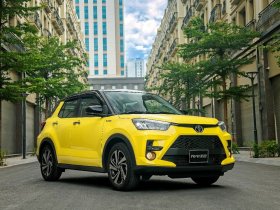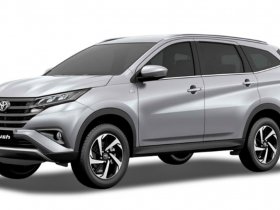Toyota Raize vs Rush: Battle Of Two Subcompact SUVs
Toyota Raize vs Rush belong to the same subcompact crossover SUV segment. When it comes to Toyota Raize vs Rush, the first, most recognizable common feature of the two SUVs is the practical approach. However, it doesn’t mean the two cars are stripped down to the bare essentials. The Raize is the sum of what a typical Filipino driver needs in a car, with some other features a sweeten the deal, while the Rush boasts a sharp styling that sets it apart on the market.

Toyota Raize vs Rush
Now let’s take a closer look at the two SUVs to see which one is the car for you:
Toyota Raize vs Rush: Interior & Exterior
While the Toyota Raize bears the Toyota brand name, it is actually produced by Daihatsu. The same goes for the Rush which is the second generation of the Daihatsu Terios.
Toyota Raize Interior
The hexagon shape of the Toyota Raize lends the interior a modern touch. It gets an 8-inch touchscreen with Apple CarPlay and Android Auto compatibility. Such a display comes standard on all Toyota’s infotainment systems. In contrast with the pleasing exterior design, the interior looks somewhat bland but fortunately, economical. It does have amenities like backup cameras and push-start button. The more you climb up the trim levels, the more modern features you get. The 1.2G and 1.0 Turbo come equipped with a customizable digital meter cluster. The latter also gets a 9-in touchscreen.
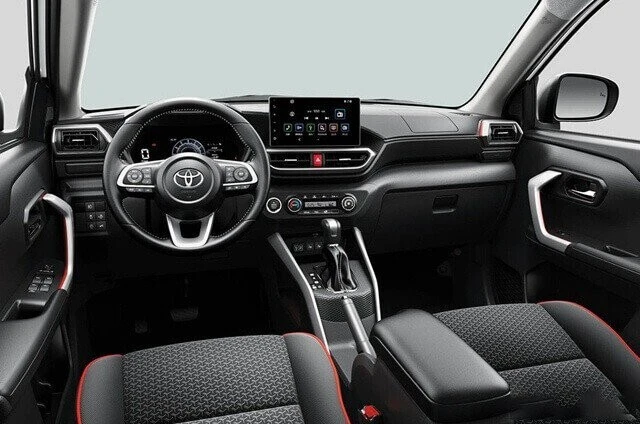
Toyota Raize interior
According to Toyota, the cargo capacity of the Raize when the seats are up is 13 cubic feet, which doesn’t seem roomy at all. However, the versatility of the interior can definitely make up for the compact space. Deepening the trunk will maximize the room inside while raising it to the level of the seats will create a flatbed. Those who praise the sufficiency of the Toyota Wigo as a compact vehicle will feel the same way about the Toyota Raize.
Toyota Rush Interior
The Toyota Rush sports a decent interior design compared to many of its rivals in the segment. The latest generation of the Rush comes with two extra third-row seats with individual tumble and a 50:50 split. The second-row seats feature 60:40 split-fold, one-touch tumble features, and reclining. All of these features give rear passengers ample boot space for comfort. Other convenient amenities include storage spaces and 13 cup holders, along with 4 power outlets. While in terms of space of quality, this isn’t the best car available in the Philippines but it has enough to meet drivers’ expectations.

Toyota Rush interior
So when it comes to the interior of Toyota Raize vs Rush in the Philippines, the latter seems to have an edge over the former.
Exterior
The smallest offer from Toyota Motor Philippines is the Wigo and the Toyota Raize’s wheelbase is about 2.6 inches longer than that of the Wigo while its length is less than a foot longer. If you have seen a Wigo in real life, it’s easy to imagine how big the Raize is because the latter is similar in size save for being a bit taller. The 200mm ground clearance means the Raize is ideal for city drive but can still handle a bit of a bumpy road if the occasion calls for it.
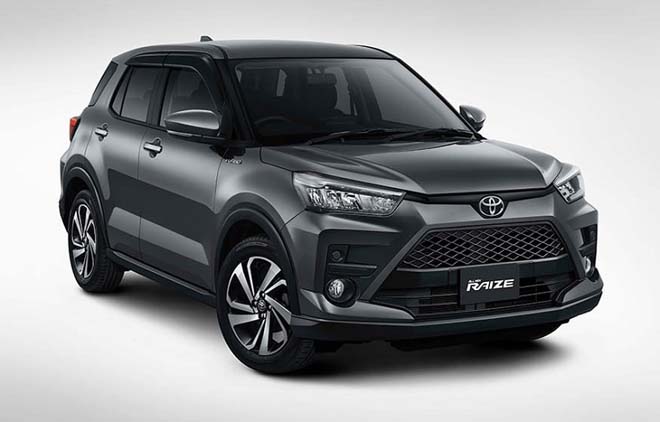
Toyota Raize exterior
The Toyota Raize exudes a futuristic vibe as it borrows generously from the design of its more chunky siblings like the RAV4 or the Fortuner. Overall, the look is the outcome of a minimalist design language coupled with a slew of pronounced lines.
The Rush is 1,705 mm tall, 1,695 mm wide, and 4,435 mm long, meaning, Toyota Raize vs Toyota Rush, it’s similar to the Raize when it comes to size. This vehicle looks a world apart from its previous generations as Toyota has adopted larger grilles and shaper lines on the outside. Slim headlights surround the sizable chrome grille. The smartly executed design makes the car looks somewhat bigger than it really is. However, the small wheels might disappoint some users as they remind them of cheap Chinese vehicles.
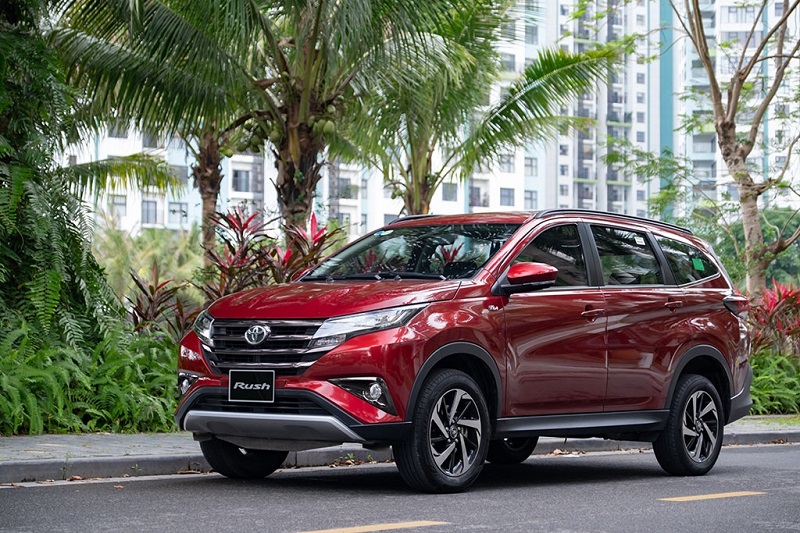
Toyota Rush exterior
Toyota Raize vs Rush: Engine, Performance & Fuel Consumption
A 1.5-liter DOHC four-cylinder is the only engine option for the Toyota Rush. It is capable of 134 nm of torque at 4200 rpm and 103 hp at 6000 rpm. The rear wheels receive power via a 4-speed automatic transmission. Buyers in these parts of the world have the choice to acquire a vehicle with a 5-speed manual. The Toyota Rush’s maximum speed is 180 kph and it takes the car 14 seconds to reach the speed of 100 kph. The fuel economy is decent for an SUV with 7 seats, standing at 7l.7 /100km.
The Rush is an ideal family vehicle and it drives better than many of its rivals on the market. The performance of the rear-wheel-drive platform has nothing to complain about and the only downsides are the less-then-comfortable suspension and weak engine power.
The Toyota Raize, on the other hand, comes equipped with a 1.2L engine that performs well compared to other competitors in the subcompact crossover segment. It reacts swiftly to drivers’ commands while if you drive some of its rivals, a sluggish response is something you will have to live with. However, the sluggishness is for efficiency so when the Raize sacrifices that for responsiveness, efficiency suffers. So it’s really up to your preference.
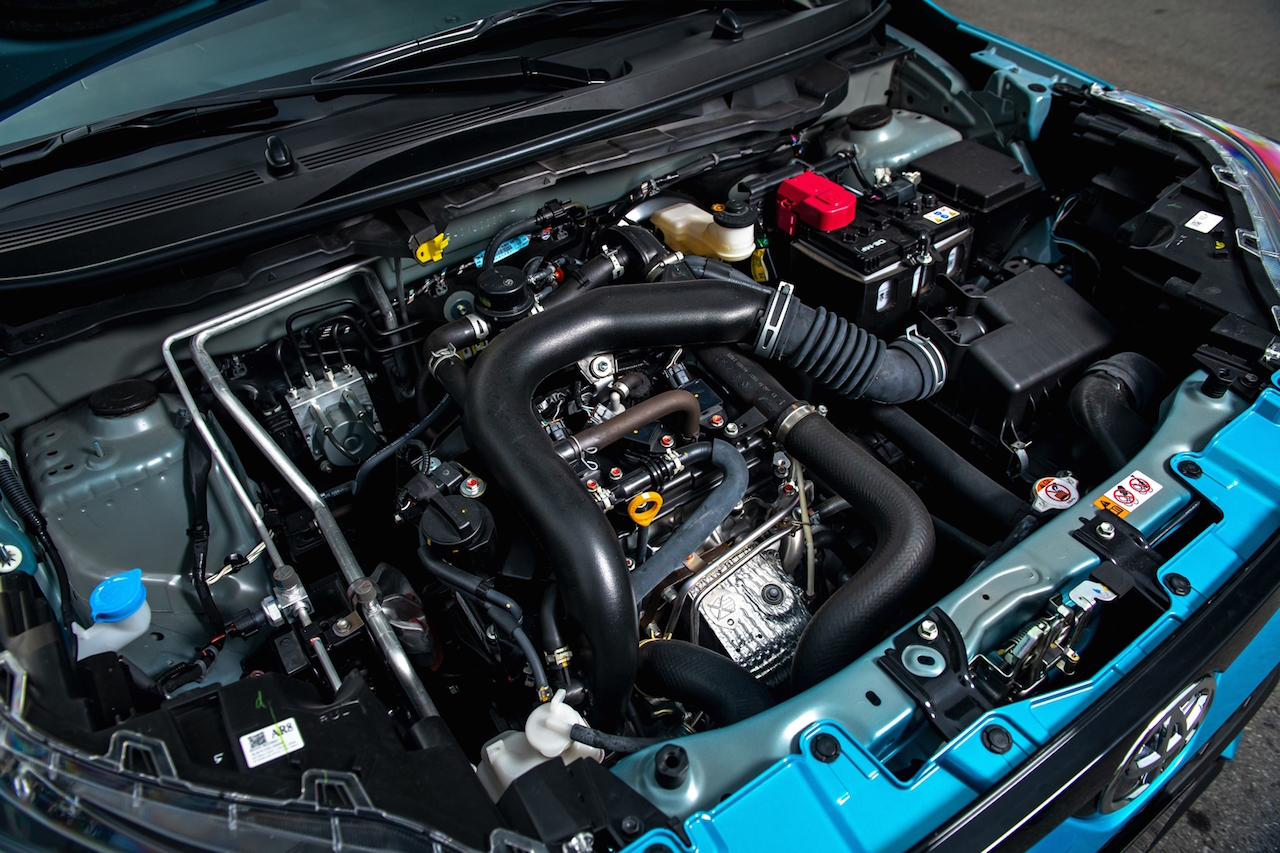
Toyota Rush engine
The steering of the Toyota Raize feels intuitive. And to add to the list of its advantages, Toyota has managed to minimize the body roll of the vehicle - an outcome achieved by the car’s small size, its rear torsion beam, and MacPherson strut suspension. Overall, driving the Toyota Raize won’t bring any surprises, which is a good thing for a typical driver as familiarity usually leads to confidence on the roads.
Toyota Raize vs Rush: Verdict
With a similar size and power, the battle of Toyota Raize vs Rush seems inconclusive. Both cars can handle road conditions in the Philippines and are geared toward families. They look similarly handsome and come with a versatile interior. But if we have to choose one, we still favor the Toyota Raize for its well-rounded and futuristic exterior.
It's Car Price Philippines's opinion, so what about you?
Thanks for reading!






